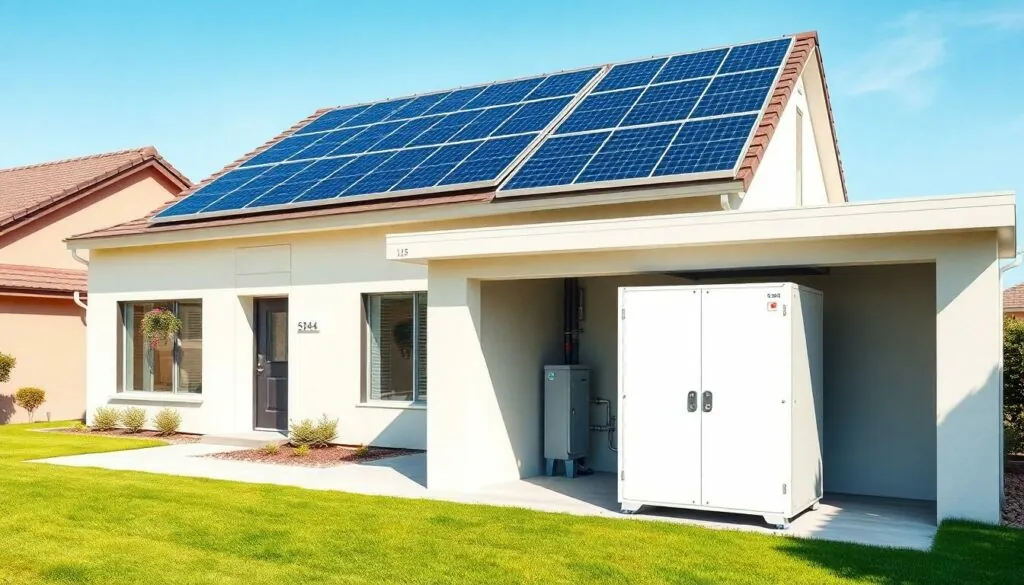Table of Contents
ToggleAs energy prices soar and the planet begs for a break, home battery storage is becoming the superhero of modern living. Imagine harnessing the sun’s power during the day and using it to keep the lights on at night. Sounds like magic, right? Well, it’s not—it’s just smart energy management. But before diving headfirst into this electrifying world, it’s crucial to understand the costs involved.
Overview Of Home Battery Storage
Home battery storage systems serve as essential components of modern energy management solutions. These systems enable homeowners to store electricity generated by solar panels during the day for use at night. Various types of batteries, like lithium-ion and lead-acid, offer differing performance and cost-effectiveness.
Cost considerations play a crucial role in adopting home battery storage. The average cost of a home battery system ranges from $5,000 to $15,000. Factors influencing the total investment include battery capacity, installation expenses, and specific brand choices. In addition, some state incentives and federal tax credits can offset these costs significantly.
Performance metrics also matter. Many homeowners prioritize systems with longer lifespans and higher efficiency ratings. Battery capacities are measured in kilowatt-hours (kWh), typically varying from 5 kWh to 20 kWh. These specifications determine how much energy a unit can store, influencing the optimal choice based on household energy consumption.
In addition, maintenance costs should not be overlooked. Lithium-ion batteries usually require less maintenance than their lead-acid counterparts, making them more appealing despite a higher initial price. Most battery systems also come with warranties ranging from 5 to 10 years, contributing to overall value assessments.
Financing options further add flexibility. Homeowners might consider loans specifically designed for energy storage systems, allowing for manageable monthly payments. Utility programs offering incentives for energy storage may enhance financial viability, particularly in regions with high electricity rates.
The growing appeal of home battery storage continues to reshape energy consumption dynamics. Understanding the costs and benefits proves critical for homeowners looking to invest wisely in energy independence technologies.
Key Factors Influencing Home Battery Storage Cost

Various elements affect home battery storage costs. Understanding these factors helps homeowners make informed decisions.
Battery Technology
Battery technology plays a significant role in determining costs. Lithium-ion batteries, known for efficiency and longevity, usually come at a higher price compared to lead-acid alternatives. Performance metrics like lifespan and efficiency ratings vary across technologies. Lithium-ion batteries often last 10 to 15 years, while lead-acid batteries may require replacement every 3 to 5 years. Additionally, capacity influences pricing, with systems ranging from 5 kWh to 20 kWh in total energy storage. Choosing advanced technology can mean paying more upfront but often results in savings over time due to reduced maintenance and longer lifespans.
Installation Fees
Installation fees significantly impact the overall cost of battery systems. Factors include system complexity, electrical upgrades, and local labor rates. Costs typically range from $1,000 to $3,000, depending on the installation specifics. Employing experienced professionals ensures compliance with local codes and safe operation. Site assessment may also add to costs, as homes may require structural modifications or additional equipment for optimal performance. Investing in professional installation ensures efficiency and maximizes the battery system’s potential.
Incentives and Rebates
Incentives and rebates can substantially lower costs for homeowners. Many states offer various financial incentives for home battery installations. Federal tax credits apply to renewable energy systems, making them more accessible. Homeowners may find local utility programs that provide rebates or special financing options. These financial programs encourage energy independence and sustainability. It’s crucial to research available incentives, as they can significantly impact the overall investment in home energy storage solutions.
Cost Comparison
Understanding the cost landscape of home battery storage systems helps in making informed decisions. Numerous factors influence pricing, from brand reputation to performance features.
Leading Brands
Top brands in the home battery market include Tesla, LG Chem, and Sonnen. Each brand offers distinct features and pricing tiers, making comparisons essential. Tesla’s Powerwall typically ranges from $10,500 to $15,000, with high efficiency and storage capacity. LG Chem’s RESU line often attracts consumers with prices between $5,000 and $10,000, reflecting varied capacity options. Sonnen’s ecoLinx systems start at around $10,000, focusing on smart energy management. Evaluating product reviews and warranty offerings further aids homeowners in choosing the right fit.
Performance Vs. Price
Performance features significantly affect battery pricing. Lithium-ion batteries offer higher efficiency and longer life spans, costing more upfront than lead-acid alternatives. The trade-off involves performance metrics such as lifespan, generally ranging from 5,000 to 15,000 cycles for lithium-ion. In contrast, lead-acid batteries often last 1,000 to 3,000 cycles but come at lower prices, generally between $5,000 and $7,000. Homeowners must weigh long-term savings against initial costs when deciding on a battery type. Efficiency ratings also play a role, with systems typically offering around 85% to 95% round-trip efficiency impacting overall value.
Long-Term Financial Implications
Long-term savings present a compelling factor for homeowners investing in battery storage systems. Homeowners typically recoup initial investments through reduced energy bills over time. Costs fluctuate based on battery type and capacity, necessitating careful consideration of energy needs.
Lithium-ion batteries offer longevity, reducing replacement frequency. Efficiency ratings also contribute to financial implications, with many systems operating between 85% and 95% efficiency. Selecting a high-efficiency system can enhance savings, especially in areas with high electricity rates.
Regarding lifespan, lithium-ion batteries often last between 5,000 and 15,000 cycles. This durability translates into years of reliable energy storage. Lead-acid batteries, although lower in upfront costs, provide shorter lifespans of 1,000 to 3,000 cycles, which may lead to higher long-term expenses.
Tax incentives further enhance financial viability. Federal tax credits and state programs can significantly lower initial costs, making home battery systems affordable. Homeowners frequently weigh these incentives against installation fees, which typically range from $1,000 to $3,000.
Market variations exist, with companies like Tesla, LG Chem, and Sonnen offering diverse price points. Tesla’s Powerwall starts at around $10,500, while LG Chem’s RESU line ranges from $5,000 to $10,000. Sonnen’s ecoLinx systems, priced from $10,000, reflect technological advancements and added features.
Cash flow considerations arise with financing options, such as loans for energy storage. Many utility providers offer programs that facilitate investments, ensuring accessibility for all homeowners. Understanding these financial implications empowers homeowners to make informed decisions, leading to sustainable energy independence.
Investing in home battery storage is a strategic move for homeowners seeking energy independence and cost savings. By carefully evaluating the various options available and understanding the associated costs, they can make informed decisions that align with their financial goals and sustainability objectives.
With advancements in technology and the potential for incentives, the long-term benefits often outweigh the initial investment. Homeowners who embrace this innovative solution not only contribute to a greener future but also gain control over their energy usage and expenses. The journey toward energy efficiency starts with a thoughtful approach to battery storage.




